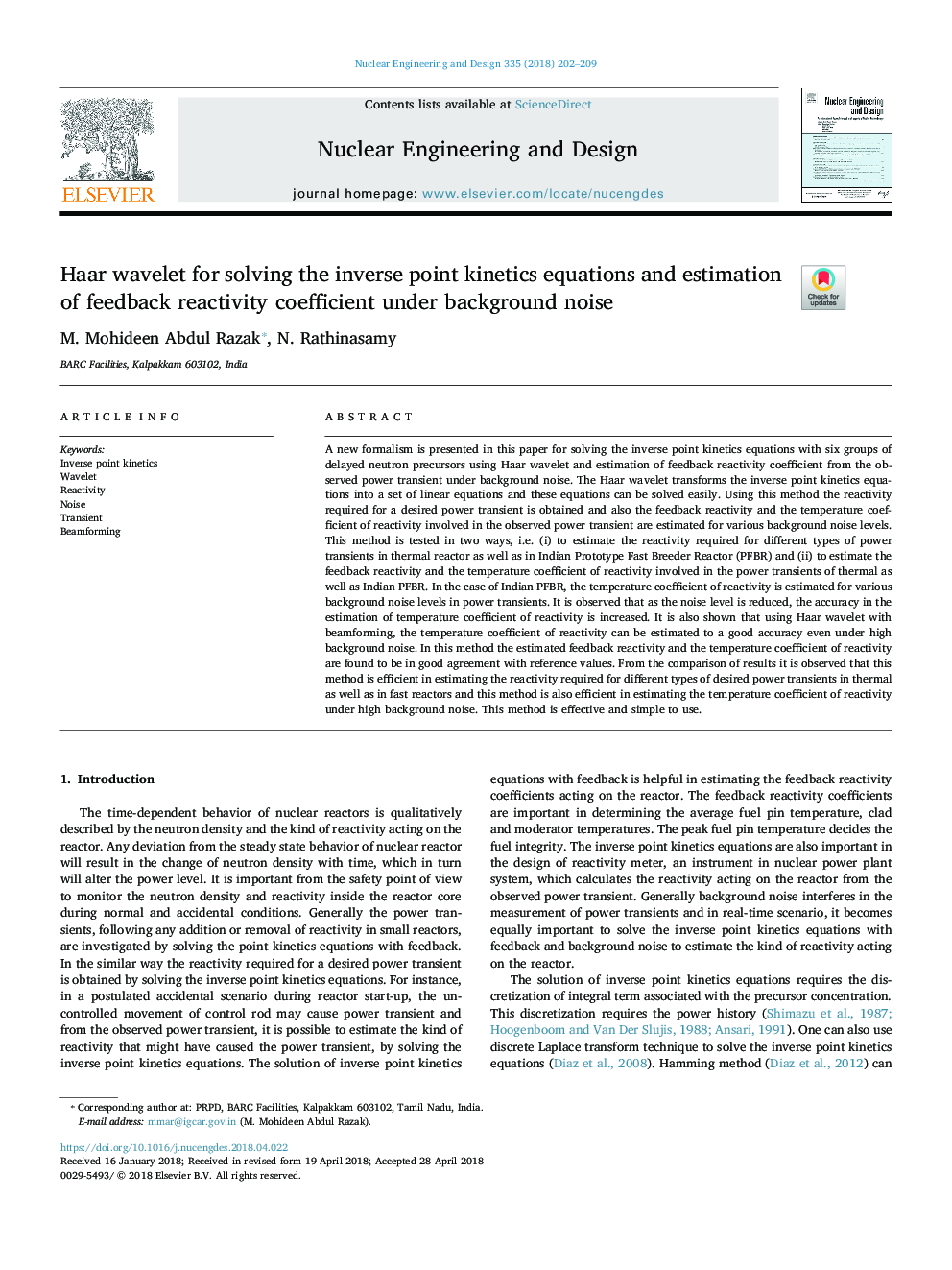| کد مقاله | کد نشریه | سال انتشار | مقاله انگلیسی | نسخه تمام متن |
|---|---|---|---|---|
| 6758716 | 1431386 | 2018 | 8 صفحه PDF | دانلود رایگان |
عنوان انگلیسی مقاله ISI
Haar wavelet for solving the inverse point kinetics equations and estimation of feedback reactivity coefficient under background noise
دانلود مقاله + سفارش ترجمه
دانلود مقاله ISI انگلیسی
رایگان برای ایرانیان
کلمات کلیدی
موضوعات مرتبط
مهندسی و علوم پایه
مهندسی انرژی
مهندسی انرژی و فناوری های برق
پیش نمایش صفحه اول مقاله

چکیده انگلیسی
A new formalism is presented in this paper for solving the inverse point kinetics equations with six groups of delayed neutron precursors using Haar wavelet and estimation of feedback reactivity coefficient from the observed power transient under background noise. The Haar wavelet transforms the inverse point kinetics equations into a set of linear equations and these equations can be solved easily. Using this method the reactivity required for a desired power transient is obtained and also the feedback reactivity and the temperature coefficient of reactivity involved in the observed power transient are estimated for various background noise levels. This method is tested in two ways, i.e. (i) to estimate the reactivity required for different types of power transients in thermal reactor as well as in Indian Prototype Fast Breeder Reactor (PFBR) and (ii) to estimate the feedback reactivity and the temperature coefficient of reactivity involved in the power transients of thermal as well as Indian PFBR. In the case of Indian PFBR, the temperature coefficient of reactivity is estimated for various background noise levels in power transients. It is observed that as the noise level is reduced, the accuracy in the estimation of temperature coefficient of reactivity is increased. It is also shown that using Haar wavelet with beamforming, the temperature coefficient of reactivity can be estimated to a good accuracy even under high background noise. In this method the estimated feedback reactivity and the temperature coefficient of reactivity are found to be in good agreement with reference values. From the comparison of results it is observed that this method is efficient in estimating the reactivity required for different types of desired power transients in thermal as well as in fast reactors and this method is also efficient in estimating the temperature coefficient of reactivity under high background noise. This method is effective and simple to use.
ناشر
Database: Elsevier - ScienceDirect (ساینس دایرکت)
Journal: Nuclear Engineering and Design - Volume 335, 15 August 2018, Pages 202-209
Journal: Nuclear Engineering and Design - Volume 335, 15 August 2018, Pages 202-209
نویسندگان
M. Mohideen Abdul Razak, N. Rathinasamy,